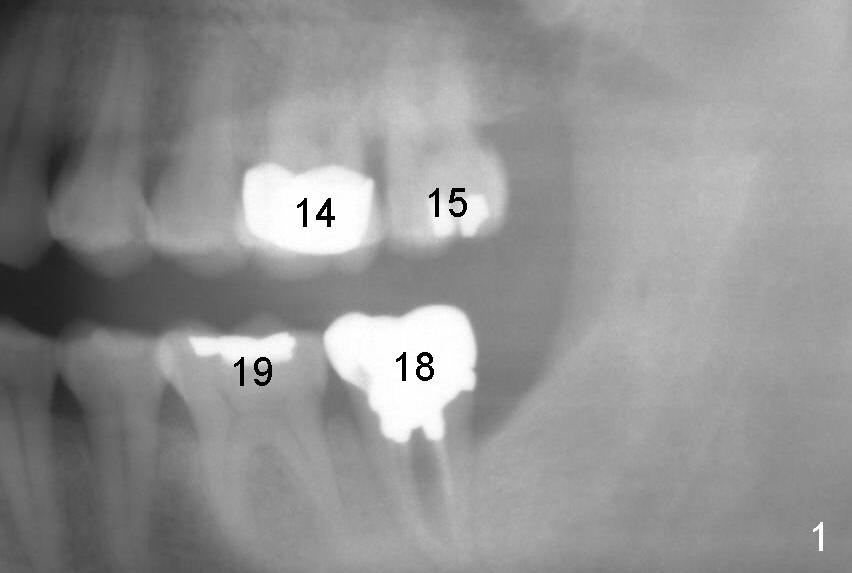
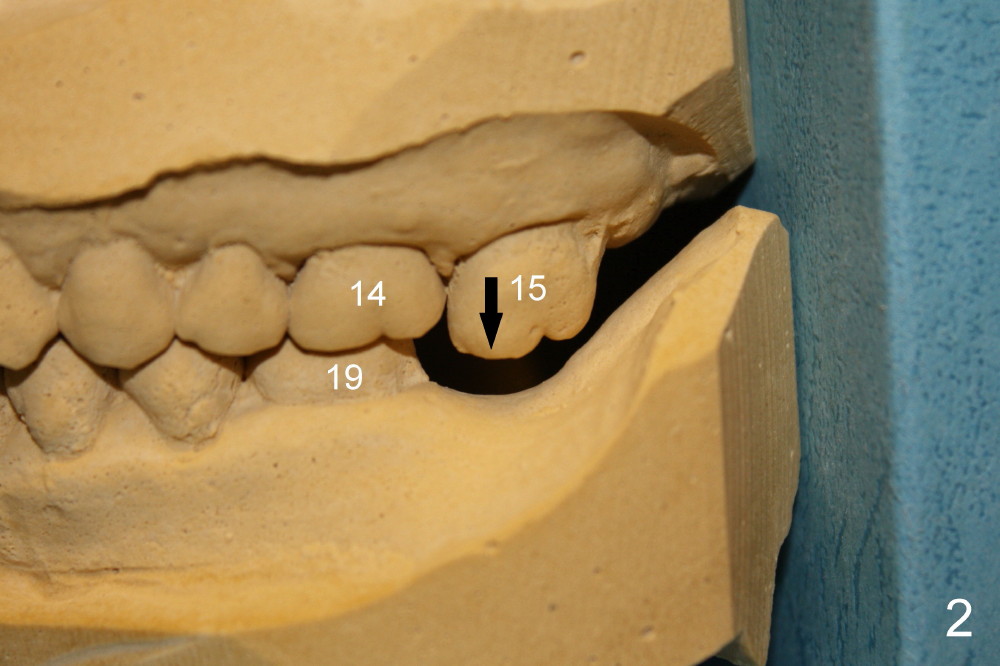
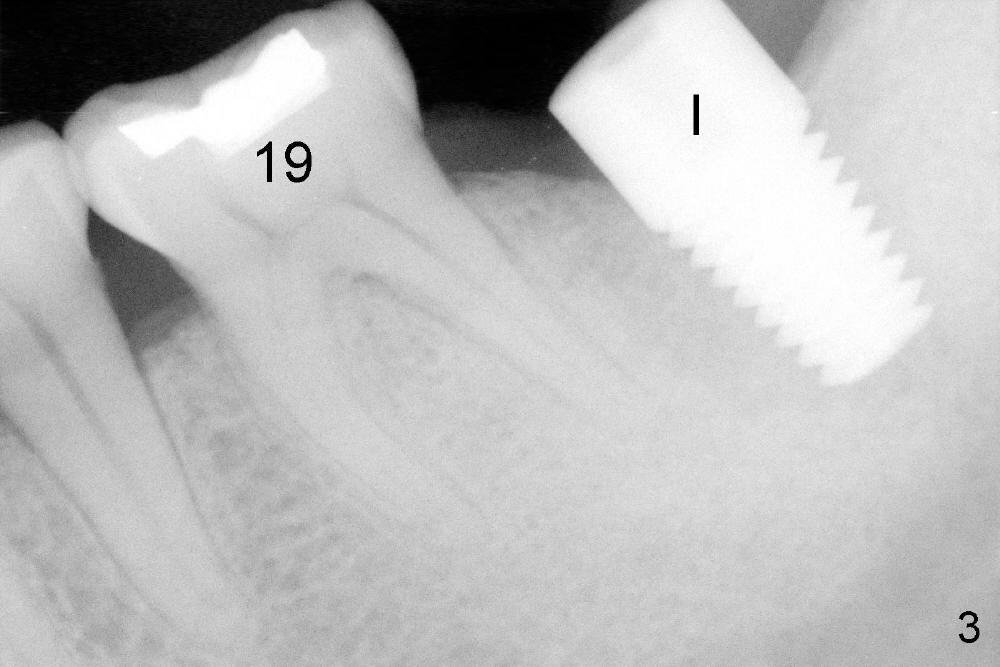
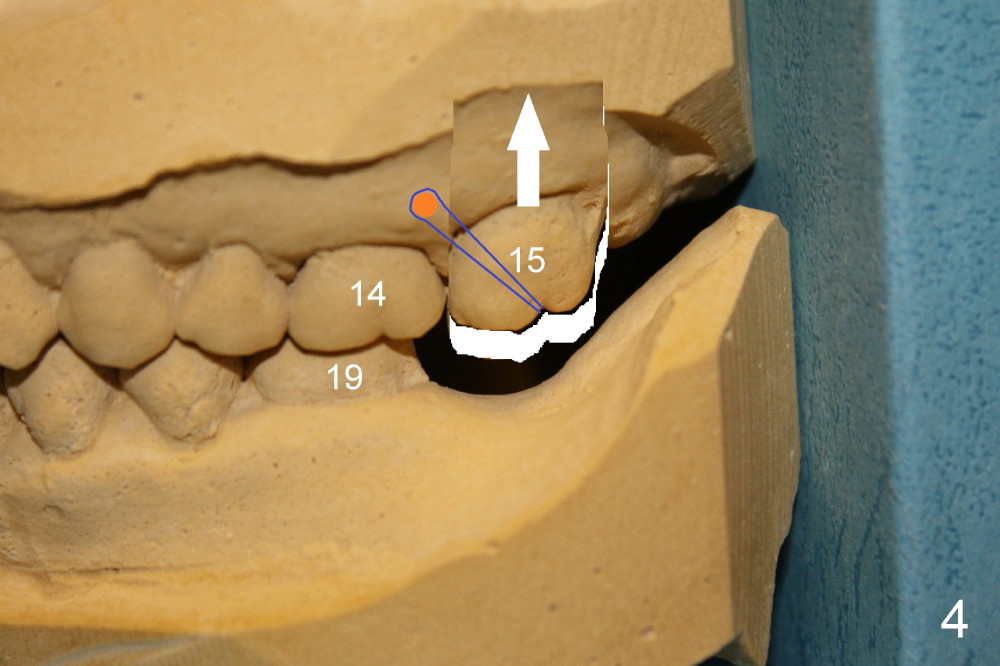
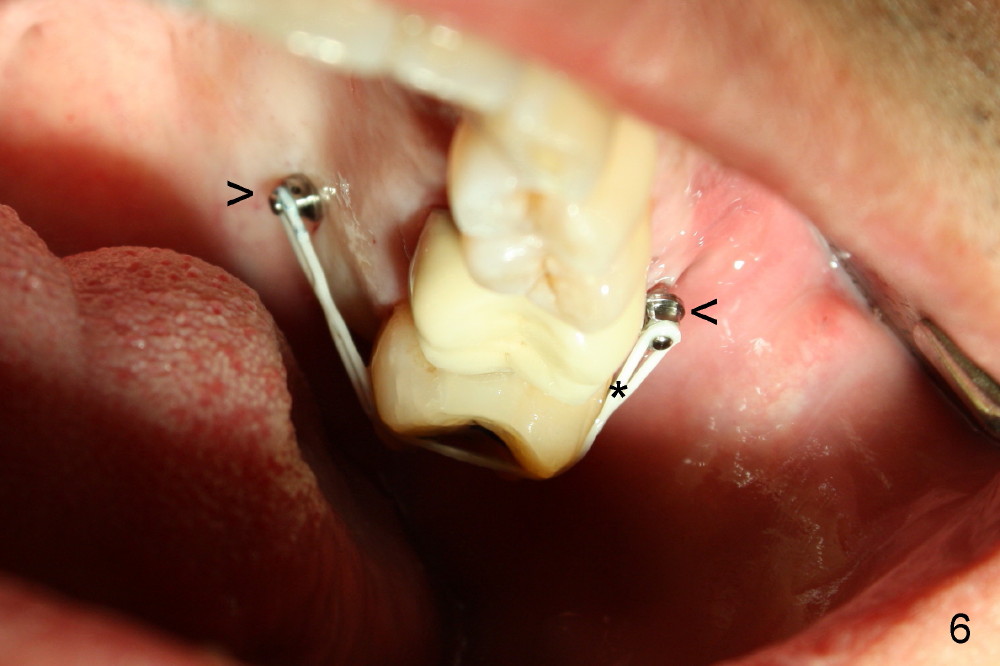
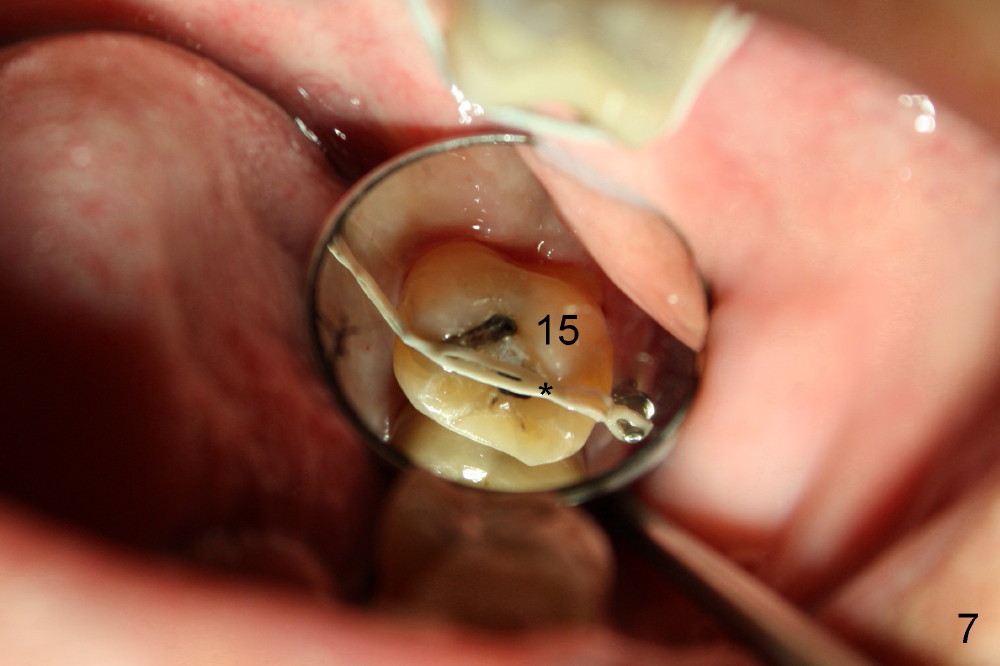
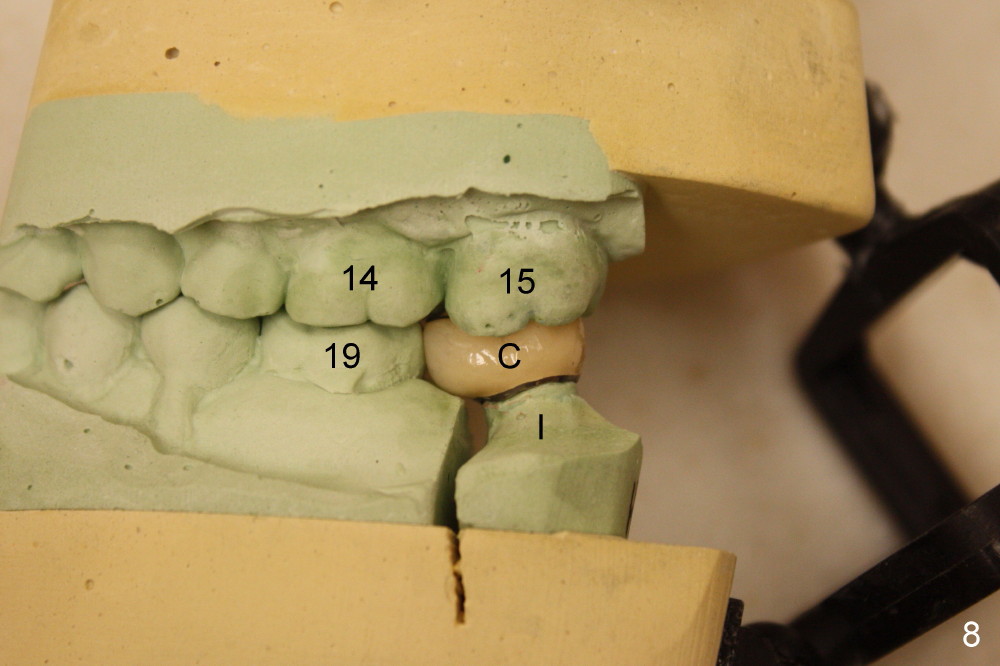
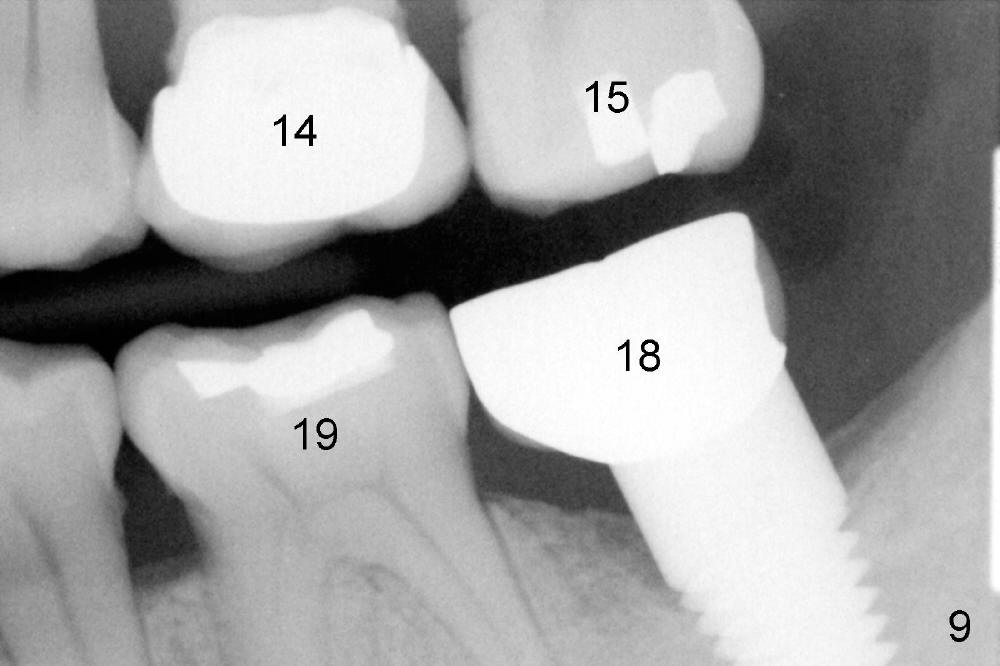
 |
 |
 |
|
 |
|
 |
|
 |
 |
 |
Tooth Shifts after Extraction and How to Fix it
Mr. Wang has infection in the tooth #18 and the tooth is finally extracted (Fig.1). One and a half years later, the tooth upstairs #15 (Fig.2) has grown downward a lot (arrow), because of lack of resistance downstairs. After placement of a regular implant in the missing tooth area (Fig.3: I), we find that there is not enough space to place a new tooth over the implant. Implant placement is delayed due to the fact that the patient was a smoker. It took a while for him to quit. Smoking is bad for implant healing.
We plan to move the shifted tooth back to its normal position (Fig.4 arrow) by using mini-implants as an anchorage (orange circle) and a rubber band as retraction force (blue lines).
Two mini-implants are placed around the extended tooth (Fig.5 *). Since the mini-implants are extremely small as compared to the regular implant in Fig.3, placement of them has minimal pain. We do not need needle shot. Instead we just apply topical anesthetic to finish the procedure. Immediately after placement of the two mini-implants (Fig.6 >), a rubber band (Fig.6,7 *) is hooked to them and across the biting surface of the shifted tooth. Under the constant tension of the rubber band, the tooth #15 gradually goes up (Fig.8, compare with Fig.2). It takes 8 months for the movement to occur. C stands for a new crown over the implant (I). The bite will be normal for the patient. The bite remains normal ten months after crown cementation (Fig.9).
Xin Wei, DDS, PhD, MS 1st edition 01/05/2013, last revision 12/24/2016